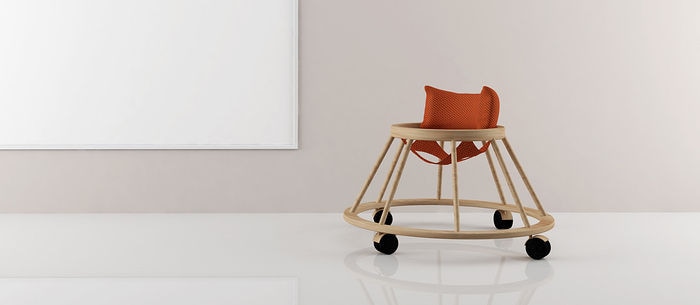Maybe you’ve seen vintage photos of infants tottering around in baby walkers, as the baby apparatus has been around for more than a century. A patent for the first style of baby walker was filed in the 1870s. Older wicker versions even appear in Renaissance-era paintings. The best baby walker, if it ever existed, came in all kinds of styles, depending on the era — metal and wood, in the shape of plastic animals, in vinyl with floral prints and in circular shapes.
You may have also heard horrifying stories of babies in walkers inadvertently falling down stairs or tipping over or delaying their ability to walk because of a dependence on baby walkers. Your worries would be legitimate because baby safety experts and the American Academy of Pediatrics (AAP) refuse to endorse even the best baby walker (if it exists).
Walkers “are dangerous, and injury risk is high,” says Debra Holtzman, a national child safety and health expert. The most severe injuries happen when babies tumble down stairs in walkers, but she adds that they can also fall out of them or use them to reach hot items or heavy things they pull onto themselves.
Some babies, she says, have even drowned in walkers, using them to scoot near a full bath tub. “Ironically, most walker injuries happen while adults are supervising,” says Holtzman, who’s also the author of “The Safe Baby: A Do-It-Yourself Guide to Home Safety and Healthy Living.” “You simply cannot respond quickly enough.” A baby in a walker can move more than three feet in just one second, she asserts.
Hollie Schultz, the founder of BabyGizmo.com, a parenting resource site known for its product reviews, says she does not even provide reviews for baby walkers because she doesn’t recommend them. “I don’t think they are safe, and babies shouldn’t learn to walk like that,” she says. Kit Li-Perry, Giggle‘s chief merchandising officer agrees and won’t recommend them. Nor will the the AAP, which encouraged a ban on them 14 years ago, or “Consumer Reports” which refuses to rate them.
What to Use Instead?
“A stationary activity center is still fun for your baby, and it is a much safer choice,” says Holtzman. Even then, she suggests just using the activity center for short periods so babies can crawl or do tummy time to develop strength and coordination in their arms, legs and torsos. On her site, Schultz recommends the Go-Pod by KidCo because of its easy portability and the ability to attach toys to it to keep your little one occupied.
For an activity center packed with toys and cool features, the Little Superstar Step ‘n Play Piano by Fisher-Price fits the bill. It has a sliding seat that can satisfy the desire of those parents craving a device that will let the baby take a few steps while still staying safe. Baby steps on keys that respond with music and flashing lights. At torso level, the Step n’ Play has play microphones, a mirror and toys like piano keys. When baby grows into a toddler, you can remove the seat so she can stand and make music.
For an activity center that functions as an ExerSaucer, check out the ExerSaucer Beach Baby Saucer by Evenflo. This alternative to walkers lets baby spin around while occupying little hands with beads, fish and plastic pails. You can also use push-behind baby walking toys, which allows your little cruiser to walk under his own strength.
Erin Chan Ding is a freelance journalist based in the Chicago area who writes about parenting, news, features and business. She used ExerSaucers with both of her children.






